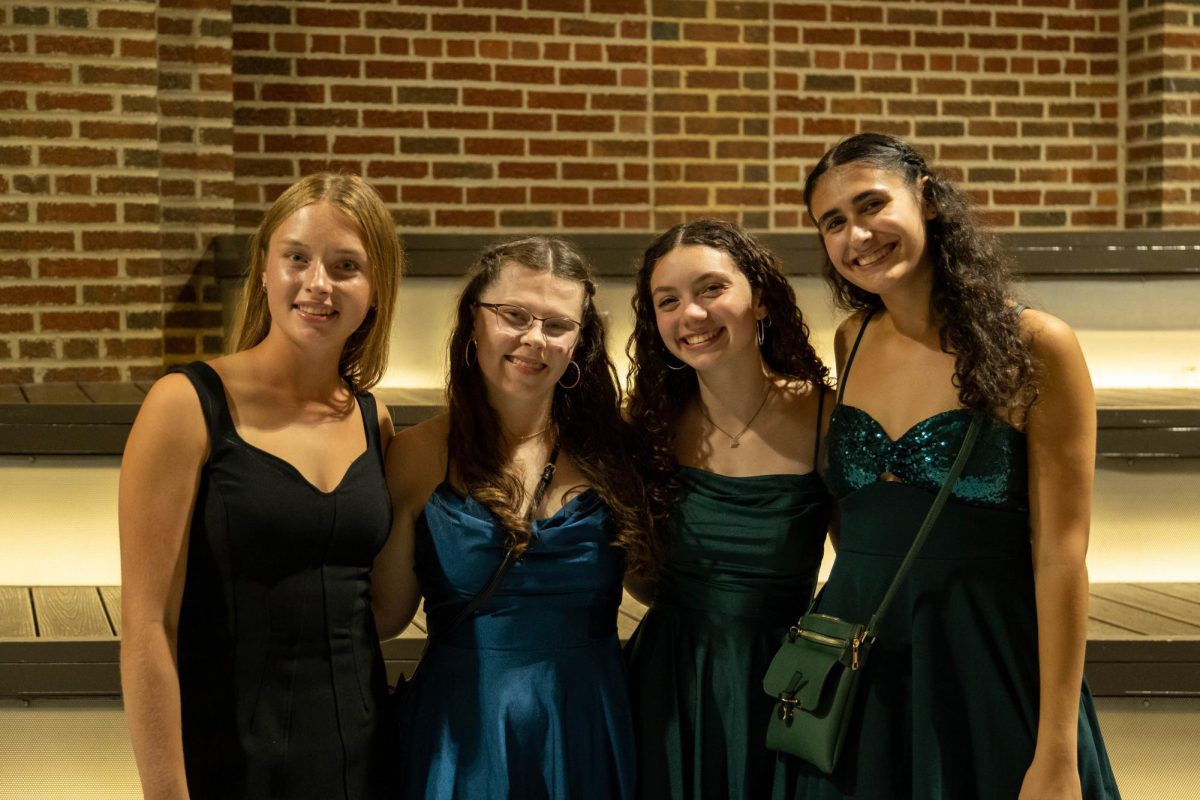Opinion | Reflecting on the stereotypes surrounding food from non-Western cultures
January 27, 2023
It’s not uncommon for stereotypes to emerge among the food of different cultures, whether it’s around the food we assume one might eat or the cliche, white-washed meals that Americans attempt to recreate. Either way, there is a lot of ignorance surrounding food from non-Western cultures. Food represents different people’s identities, and the preparation of it varies depending on a person’s upbringing. Often, food is used positively to represent belonging to a group of people and allows an individual to express their culture through their traditional cuisine. But, on the other hand, it can also be used to justify prejudice against groups of people. Unfortunately, Evanston is not immune to such a phenomenon, as the wide range of cultures that appear at ETHS make it easy for these stereotypes to arise. As students, we need to reflect upon the stereotypes that we feed into—even if it is unintentional.
Sophomore Ana Benitez eats Uruguayan cuisine at home and explains that this food is not consumed as much here, resulting in a feeling of alienation from her culture.
“My favorite meat is called molleja (mo-sheh-ha). In English, they are called sweetbreads and are a cow’s thymus gland,” Benitez says. “When we go to the butcher here, the parts we are looking for are a lot cheaper, [because] no one wants that cut of meat.”
Often, people misjudge Benitez’s family because, in American society, we more typically eat the tenderloin and sirloin cuts of steak, rather than the Uruguayan cut.
“We only go to Uruguay once a year, so we don’t get to have it that often, and it’s easy to feel disconnected from the culture,” Benitez elaborates.
Food is such a big part of Benitez’s Uruguayan identity, but Evanston doesn’t have any restaurants that serve Uruguayan cuisine. There is Argentinian cuisine, however, which is very similar, so Benitez usually just grabs that, but it’s not the same as the genuine meals that her family is used to.
Benetiz often comes across the stereotype that Uruguayan cuisine is just a copy of Argentenian cuisine, but this is not the case.
“We have a lot of food in common because of the Spanish and Italian immigration to the area, known as el ‘Cono Sur’ or ‘Southern Cone,’” Benitez notes.
Saying that one type of cuisine is a copy of another is taking away from the individuality of their cultures. People also take away individuality when they generalize the food of different cultures. Another common stereotype between America and Uruguay is the portion sizes of Uruguayan food.
“We don’t think about it in the way they think of Americans eating big portions, which is connected to obesity and all that. People just know portions are generally going to be big,” Benitez elaborates.
In the United States, there is a surplus of processed foods, so large meals from countries like Uruguay are often stereotyped because American meals are filled with unhealthy ingredients. However, in Uruguay, while the portion sizes are typically large, the food is made from natural, real ingredients that compensate for the heavy meals. Uruguay proves that large meals are not a bad thing, and ETHS should start introducing these natural ingredients as well.
When you go to the cafeteria at ETHS, there are a couple options for fresh food, but if you don’t like what they are serving, people most likely will turn to the easiest option: fast food. At all of the cafeterias, there are chips and cookies in the checkout line that students turn to, along with vending machines around the corner. Not to mention, finding meals if you have a dietary restriction makes matters even more difficult because of the limited amount of salads and vegetarian options. Thus, ETHS has further promoted this stereotype of unhealthiness in American food.
Sophomore Naina Malholtra has experienced stereotypes with her Indian cuisine as well. Commonly, people label Indian food as very spicy, when this is usually an exaggeration.
“There’s certain dishes that are supposed to be spicy, but mainly the food is just very flavorful and not spicy at all,” Malholtra elaborates.
Traditional Indian food is rarely represented in the United States because of how heavily it’s been Americanized over time. For Malholtra, this makes it easy to distinguish the authenticity of Indian food in Indian restaurants.
“Most of the Indian restaurants I’ve been to are run by Indians, and a lot of it is pretty flavorful, but when we go to an American-run restaurant, the food is very bland,” Malholtra agrees. “My dad grew up there, and he has a strong metal stomach.”
Most likely, this also happens because we have watered down their culture to fit the palette of typical American food. This makes it very difficult for Indian families to find authentic restaurants to eat at.
“There’s no really good Indian restaurants anywhere, except for Devos in Chicago, and it [serves] French, Italian, and American cuisine as well,” Malholtra notes.
More needs to be done to make sure that the cuisine of different cultures is seen and recognized in its authentic form. If there are also three other cuisines served at this restaurant, then they aren’t focusing on just the Indian food, and it forces all four cultures to impact each other. So, there really isn’t any genuine food in local restaurants, and grocery stores don’t help the case. When shopping for Indian food in a supermarket, there are a lot of prepackaged frozen meals that are quick and easy to heat up at home, but are they the real deal? It can be hard to replicate spices in processed foods, and honestly, if you aren’t making it by hand, it’s hard to tell which ingredients are being used.
“There’s lots of frozen Indian meals that are not bad. It’s just hard to get the taste right,” Malholtra says.
These meals vary a lot depending on different companies making the product, to the point where it’s hard to draw the line where genuine food crosses to processed food. Indians are not the only ones who feel this way; Latinx people also encounter white-run Latin American restaurants and packaged food in grocery stores that inaccurately represent their culture on the daily. These stereotypes surround us, and we need to make an effort not to make them in the first place.
“My parents really make sure that we experience lots of types of food, and my dad goes out of his way to meet people of new cultures,” Malholtra says.
But, this is usually not the case for everybody. If you don’t belong to a certain culture, or you aren’t exposed to one, then you might not know that you are making these stereotypes. Food is who people are; it brings communities together, and it cannot be subject to change. “At the end of the day,” concludes Superintendent Dr. Marcus Campbell, “it’s about affirming who we are, and food has to reflect that.”











